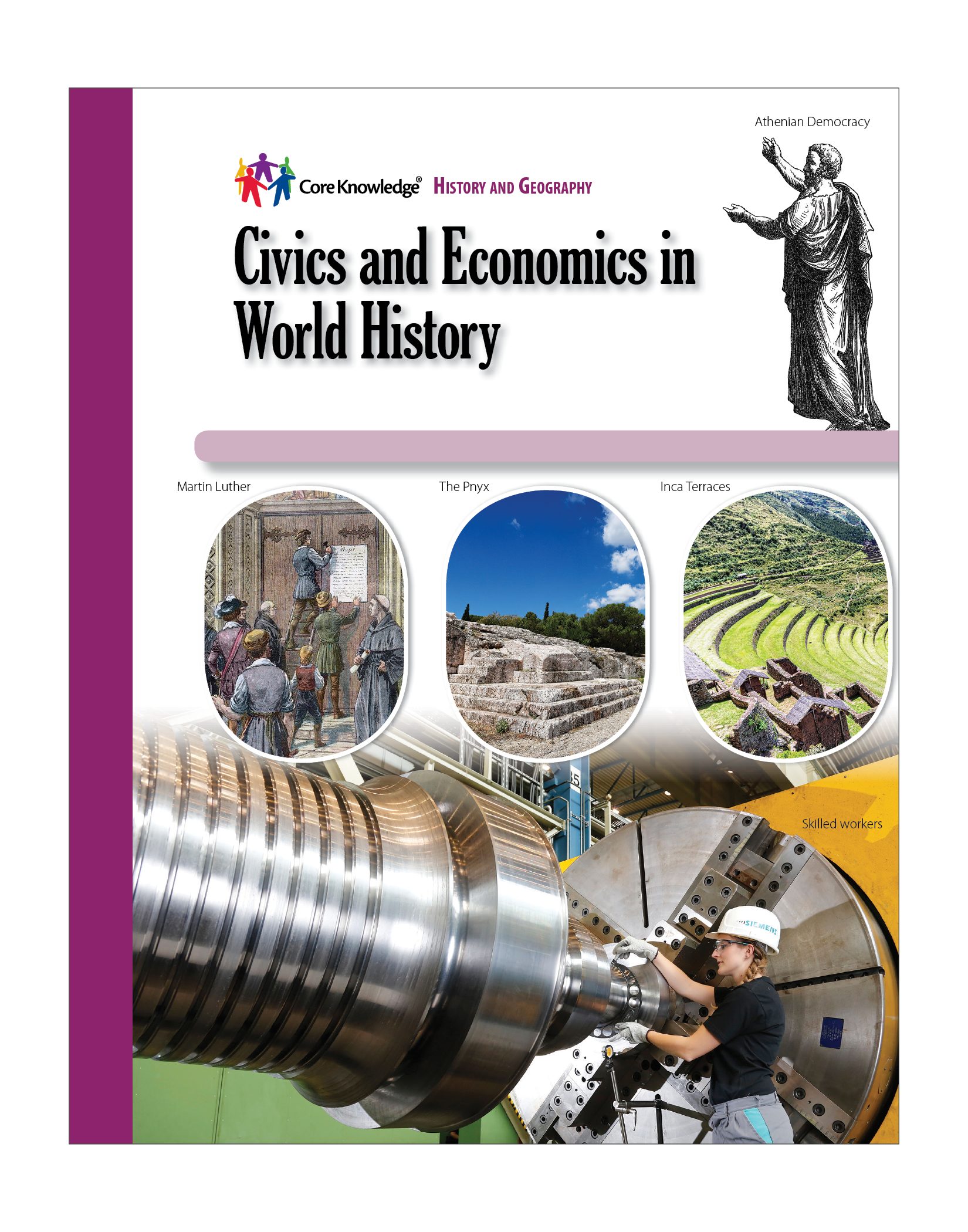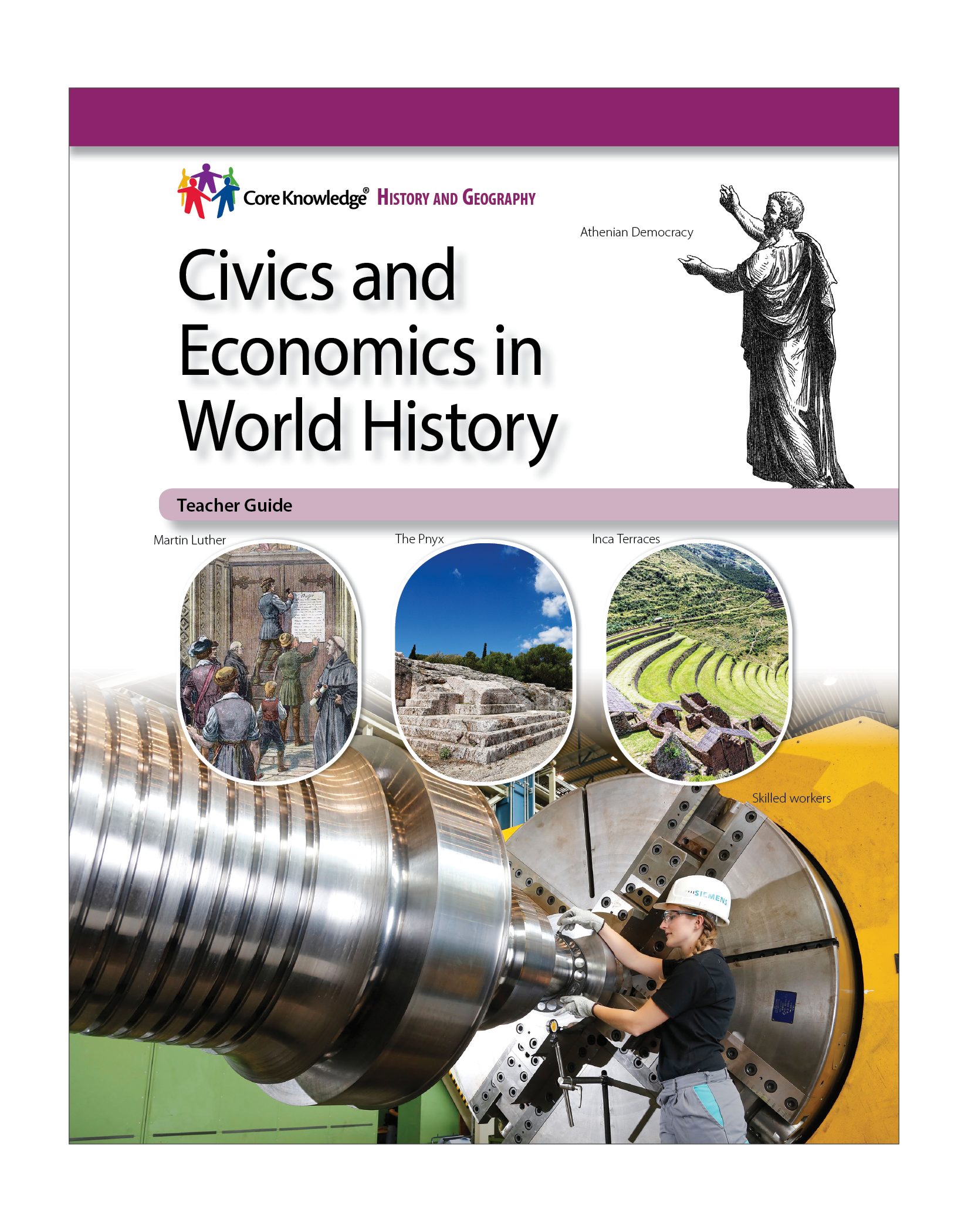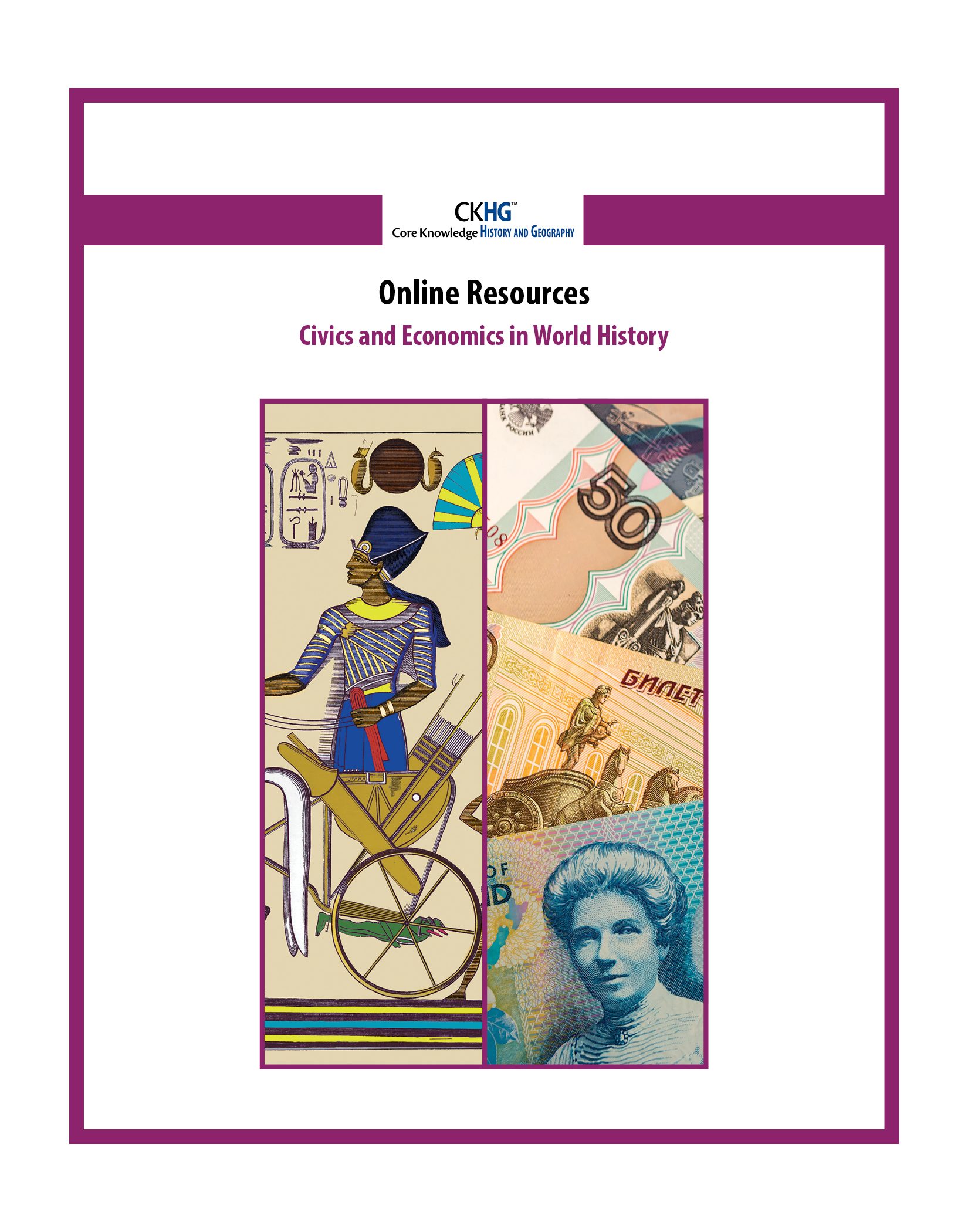
CKHG: Civics and Economics in World History
Focus:
From the earliest human societies, principles of civics and economics have influenced the way people live together and interact. Decisions about distribution of power, usage of power, and civic participation helped shape the governments of historical and contemporary societies. Similarly, decisions about the production of goods and services, money, and trade helped shape the economies of those societies.
Civics and Economics in World History Student Volume contains seven chapters (five in Civics in World History, two in Economics in World History). The Student Volume provides traditional narrative text and high-quality images that recount important concepts in civics and economics and related events in world history including:
- The roots of modern democracy can be traced to the direct democracy of ancient Athens and the republic, or representative democracy, of ancient Rome.
- Medieval European monarchs ruled with absolute authority until the Magna Carta placed the first limits on royal power in England.
- Enlightenment ideas such as natural rights, the social contract, and popular sovereignty influenced events in the centuries that followed and continue to influence events today.
- Economies are shaped by interactions between consumers and producers.
- Scarcity and opportunity cost influence economic decision-making.
- Prices are largely influenced by the principles of supply and demand.
- Anywhere—real or virtual—where people buy, sell, or trade goods and services is a marketplace.
- A society’s standard of living is influenced by factors such as availability of resources, availability of goods and services, and education.
- Examples of these economic principles can be found throughout world history.
The Civics and Economics in World History units are an optional addition to the two-volume Middle School World History program. A total of fifteen days has been allocated to the Civics and Economics in World History units. You may choose to implement these units in a fifteen-day block or spread the content throughout the year, as time allows. However, we recommend that you do not exceed this number of instructional days to ensure that you have sufficient instructional time to complete all of the World History curriculum.
Number of Lessons: 11
(Civics: 6 Lessons; Economics: 5 Lessons)
Instruction Time:
45 minutes
(The time is for each lesson. Each lesson may be divided into shorter segments.)
Additional Search Terms:
authoritarian • heredity • tyranny • capitalism • communism • nationalism • confederation • theocracy • bureaucrat • feudal • imperialism • vassal • samurai • codify • natural law • social contract • self-determination • economy • money • factors of production • scarcity • trade-off • opportunity cost • supply • demand • exchange • barter • medium of exchange • standard of value • store of value • credit • standard of living • Silk Road • feudal • monopoly • Mesoamerica • microclimate • mercantilism • cottage industry • Scientific Revolution • triangular trade • globalization • multinational corporation • offshoring • economic imperialism



